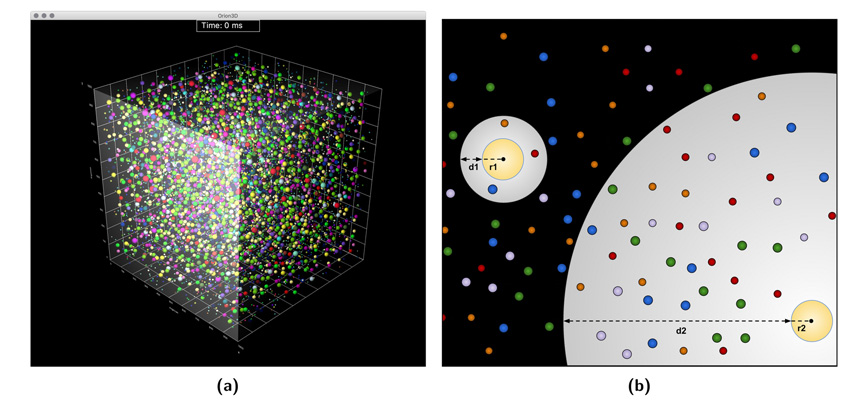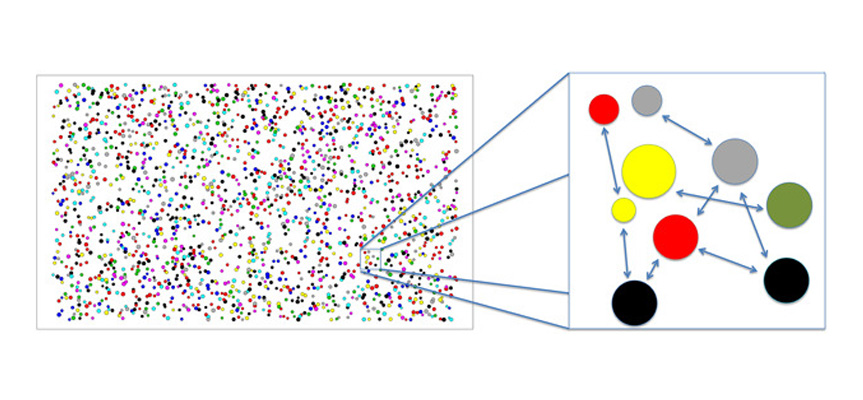Modeling
Modeling is essentially the simulation of a natural process using mathematical and physical sciences. It is a vast scientific field that aims to analyze a system mathematically based on problem analysis and measured data. Multiple methods have been proposed to achieve this goal (Data Modeling in Food Industries). Modeling plays a crucial role in system control, prediction, and optimization (Optimization Principles in Food Formulations).
Complexity of Food Structures
Food structures are complex in two main ways that make them difficult to understand and model. Food formulations primarily consist of five groups: proteins, fats, carbohydrates, ash, and water. The type, concentration, and interactions of these components ultimately determine the final characteristics and stability of the product (Thermodynamics and Its Crucial Role in Stability). Moreover, during food production processes such as heating, frying, and drying, the effects of these processes on the formulation are complex and depend on the physics of the process. The combination of these two aspects necessitates the use of advanced methods for modeling food systems. While in some cases, empirical models may provide a reasonable representation of the system, creating a comprehensive model requires addressing the complexity of the system.
Agent-Based Systems
In many systems, whether it is a food product during processing or storage or even a community, both consist of individual and separate entities that, when combined, form the product or community. In other words, if an individual in a society is considered an agent reacting with the environment, in food systems, molecules and particles act as agents that interact with one another and the environment, thereby determining the final product characteristics. The key issue is that the interactions and reactions of these agents typically follow simple rules that are defined or identified based on the type of system. In food systems, physical and chemical laws govern the behavior of each agent. When the system is given time and interactions between agents occur randomly, similar to what happens in nature, the final characteristics of the product can be observed and measured.

Agent-Based Systems Modeling in Food
To model an agent-based system, a thorough understanding of the system being modeled must be established. Initially, the key agents that determine the final characteristics of the system should be accurately defined, followed by the definition of the environment. Furthermore, the interactions between agents and the environment need to be described using mathematical relationships, such as mass and heat transfer equations commonly used in food industries. The system begins at an initial state and is simulated over a defined time period, eventually reaching a final point. Accurate modeling requires precise and accurate definitions of the governing equations for the system across different environments. However, the process of advancing the simulation is also guided by empirical knowledge.
Food Industry Processes and Agent-Based Perspective
Agent-based systems modeling can broadly cover the changes occurring in food products during processing. The food components involved in these processes act as the agents of the process. Understanding the equations governing environmental agents is the limiting factor in modeling. If the mathematical understanding of the effect of each agent on the environment and the interactions between them, along with the movement of agents under different conditions, is available, modeling can be performed more accurately. For example, heat transfer is a function of the thermal properties of the material, such as the heat transfer coefficient, which is itself a function of the material’s chemical properties. In processes like solubility, mechanisms like osmosis at any point in the mixture follow partial differential equations. Today, efforts have been made to successfully model various food processing methods such as heating, compound release, and microorganism behavior, though the potential of this approach extends beyond these processes. For instance, the potential for this modeling in combined scenarios like food changes in distribution networks and contamination control has also been explored.

